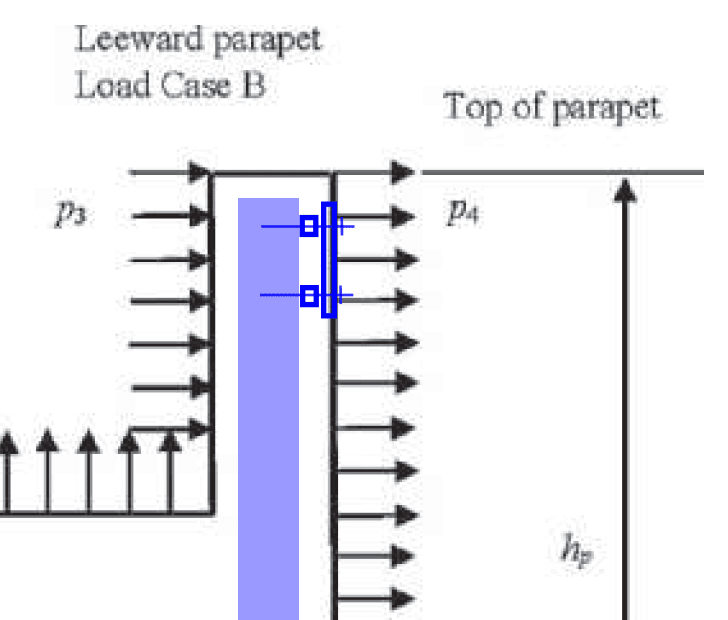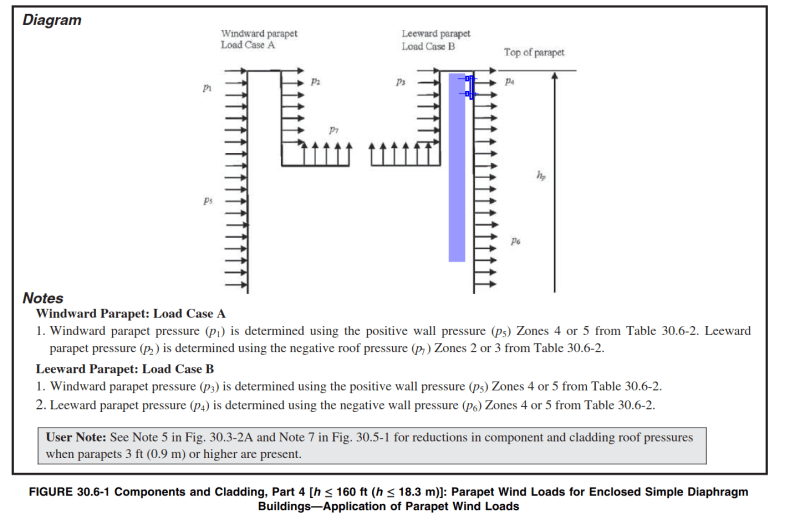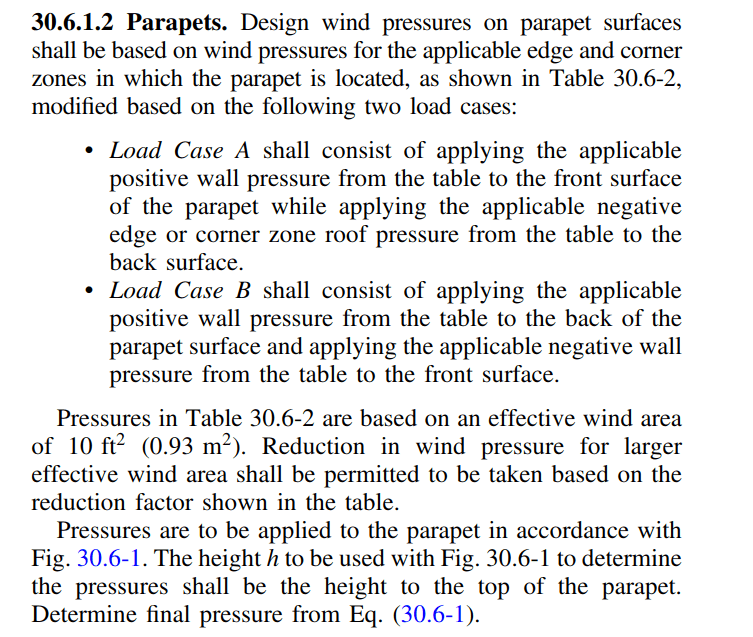RFreund
Structural
- Aug 14, 2010
- 1,885
The basic question:
You need to check the fasteners for a rainscreen cladding system. You are looking for tension on the fasteners.
From ASCE:
There are two parapet cases for parapets: Case A which applies to the windward side parapet and Case B which applies to the leeward side parapet. Since we are interested in tension on the fastener, we are only concerned with case B.
Case B consists of positive wall pressure on the back parapet "surface" and negative wall pressure on the front "surface".
Discussion:
Looking at the figure it would appear that you really only need to apply P4 which is negative wall pressure from either zone 4 or 5. In this case the force on this fastener would be no different than the wall directly below it.
My argument against this would be - what does ASCE mean as "surface". The parapet as a whole has front and back surface, but so does the piece of cladding. All the elements that make up the parapet have a front and back surface. So should P3 and P4 be applied to the front/back surface of the piece of cladding also? The first logical thought is no, because there is a wall directly behind the piece of cladding. However, there is a gap. Likely the gap is small, but what if it wasn't? At some point it turns into another parapet situation.
Having said this, I don't think this argument holds much weight. If there was no parapet there, you wouldn't be adding any wind pressure to the piece of cladding at the top of the wall. Unless you make the argument that the parapet actually causes an increase in the leeward pressure and that adding P3+P4 is just a numerical simplification. But that is beyond what I'm led to believe per ASCE 7.
Figures:



You need to check the fasteners for a rainscreen cladding system. You are looking for tension on the fasteners.
From ASCE:
There are two parapet cases for parapets: Case A which applies to the windward side parapet and Case B which applies to the leeward side parapet. Since we are interested in tension on the fastener, we are only concerned with case B.
Case B consists of positive wall pressure on the back parapet "surface" and negative wall pressure on the front "surface".
Discussion:
Looking at the figure it would appear that you really only need to apply P4 which is negative wall pressure from either zone 4 or 5. In this case the force on this fastener would be no different than the wall directly below it.
My argument against this would be - what does ASCE mean as "surface". The parapet as a whole has front and back surface, but so does the piece of cladding. All the elements that make up the parapet have a front and back surface. So should P3 and P4 be applied to the front/back surface of the piece of cladding also? The first logical thought is no, because there is a wall directly behind the piece of cladding. However, there is a gap. Likely the gap is small, but what if it wasn't? At some point it turns into another parapet situation.
Having said this, I don't think this argument holds much weight. If there was no parapet there, you wouldn't be adding any wind pressure to the piece of cladding at the top of the wall. Unless you make the argument that the parapet actually causes an increase in the leeward pressure and that adding P3+P4 is just a numerical simplification. But that is beyond what I'm led to believe per ASCE 7.
Figures:



